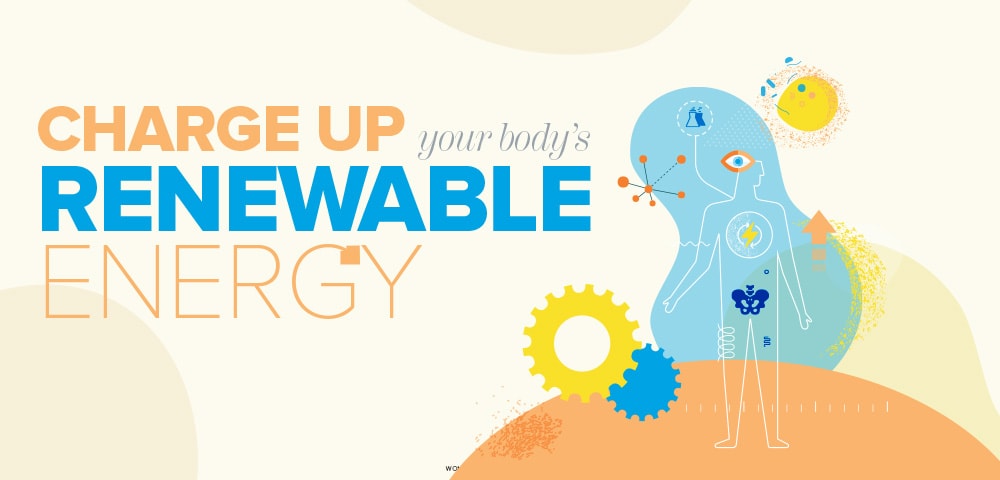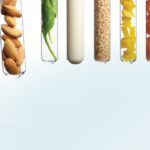
Our body as a whole, and every single cell within it, needs energy to operate. This need is met by cellular batteries called mitochondria.
These tiny power generators capture the energy released from the breakdown of food molecules and transform it into adenosine triphosphate (ATP), the human body’s energy currency. The process requires oxygen, and 90% of what we take in with every breath is delivered directly to the mitochondria for their use. The human body is a power transformer thanks to these organelles, but that’s not something we should take for granted. With a little know-how, you can keep your biological batteries operating at warp speed – full power.
On average, a cell in the human body contains about 2,500 mitochondria. A beating heart or quick-processing brain has 40 times the number of cells with approximately 100,000, so the mitochondria’s energy process passes around electrons like hot potatoes. The electron shuffle created by the energy process produces a toxic by-product from rogue electrons, also known as free radicals. Even at optimum efficiency, mitochondria are the main generators of free radicals in our cells, which is the unfortunate cost of fast energy production.
Think of free radicals as the polluting exhaust that comes out of a car’s tailpipe. For that reason, the mitochondria maintain a system of free-radical fighters, and many of the nutrients required for energy production double as antioxidants. As we age, mitochondria decline in quantity and quality. This is widely thought to be a consequence of aging and a driving factor of the aging process.
As mitochondria dwindle in number and become less efficient, they produce more free radicals and less energy. Less power and more exhaust are a hallmark of performance decline in any engine, and mitochondria are no exception. The extra free radicals generated by inefficient mitochondria accelerate age-related conditions like heart disease and dementia.
Knowledge is power
As with most aspects of the aging process, the rate at which mitochondria decline is not inevitable. You can support your mitochondria through aerobic exercise and building muscle mass, both of which stimulate the creation of brand-new cellular power generators. Since mitochondria rely on nutrients to do their job, supplying those in abundance will help optimize energy output and minimize free radical collateral damage. Here are a few specialized nutrients that are particularly useful in this regard.
Superoxide dismutase
The much less famous superoxide dismutase (SOD) is also a heavy hitter in the antioxidant department, providing a frontline defense against reactive oxygen species, the most abundant type of free radical. Levels of SOD diminish with age, leaving us more vulnerable to oxidative stress over time. The race is on to exploit SOD’s potential as an anti-aging pharmaceutical, but since SOD is natural, it is already available as a nutritional supplement at health stores.
Glutathione
A primary mitochondrial protector, glutathione defends against oxidative damage directly, as well as by activating a small army of electron “sponges” that sop up free radicals. Glutathione is depleted by heavy exercise, environmental contaminants, stress, alcohol, and smoking, and levels begin to decline with advancing age. Maintaining adequate protein intake and eating cruciferous family vegetables, such as broccoli, helps support healthy glutathione activity.
Acetyl-L-Carnitine
Acetyl-L-carnitine is a readily absorbable form of the amino acid L-carnitine, which plays a critical role in burning fat for energy. Acetyl-L-carnitine has earned a reputation as a weight loss aid by acting in the mitochondria. L-carnitine shuttles fatty acids into the mitochondria where they are transformed into ATP. By delivering a powerful energy source, L-carnitine nourishes the mitochondria themselves. In studies on elderly animals and humans, acetyl-L-carnitine has a rejuvenating effect on mitochondria, helping to revitalize both structure and function.
Coenzyme Q10
If you’ve heard of one nutrient for mitochondrial function it is probably coenzyme Q10 or CoQ10. CoQ10 is often referred to as the spark plug of the cellular engine. This vitamin-like molecule can both give and receive electrons as they pass down the energy assembly line that ultimately creates ATP. Given its key role in electron transport, it is convenient that CoQ10 also acts as a powerful antioxidant, mopping up errant electrons before they can do damage to surrounding tissues.
Whether you feel like your energy dimmer switch is always turned halfway down – or off completely – simple steps and key nutrients can turn up the flow of power by tending to your mitochondria and protect against age-accelerating free radicals.












